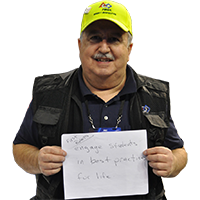The concept of high-speed trains has become widely popular in the world, with the concept that the less friction there is, the higher speeds can be reached. Asia has already implemented these on a wide scale, but even these high-speed trains mostly run on rails, which give quite a bit of friction. The other type of low-friction vehicle is the maglev train, which relies on magnetic attraction and repulsion to hold a train above an electrical field using magnets, but even maglev trains have some amount of air drag, and they cost a colossal amount.
So, how else do you make a levitating vehicle? Well, the most obvious solution is air, since it’s between the ground and whatever object you have above it. In theory, this makes sense, but in practice, it’s quite a bit harder to do. First, to push enough air towards the ground at the right balance has to be carefully calculated. Also, one of the bigger difficulties that has arisen is that the ground-effect robot is controlled more like a plane than a train; in addition to the regular forward motion, the pitch, roll, and yaw must also be considered in its functionality.
Still, this technology is progressing fairly quickly, and hopefully the world will be seeing efficient ground-effect robot trains on the non-existent rails soon!


















































